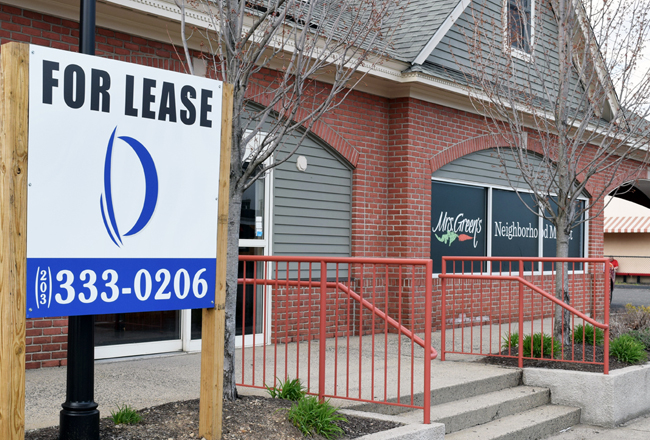Lenders view ailing retail sector with cautious confidence
In the past few months, the regional retail sector weathered a skein of closures and announced scheduled closings from several chain retailers. Bob”™s Stores, Eastern Mountain Sports, J.C. Penney, Macy”™s, Mrs. Green”™s Natural Markets, Payless and rue21 were in the process of exiting the region or had already left. Other national retailers, including GameStop and Staples, have announced plans to close stores, but whether their Fairfield and Westchester locations will be included is uncertain.

Across the nation, the retail climate is facing a very rough patch. Standard & Poor”™s issued a report in late February that forecast “increased levels of stress for the sector in 2017.” According to a Business Insider report, more than 3,000 stores are expected to close nationwide over the next several months. A sense of doom and gloom is already filtering into the media: Business Insider”™s headline warned of a “retail apocalypse” creating a “slow-rolling crisis.”
“There have been a lot of headlines that retail is in free fall and some call it the next Big Short ”” the 2017 variety of the subprime mortgage market,” said Manus Clancy, managing director at Trepp LLC, a New York City-based provider of commercial mortgage data and analytics.
Jamie Woodwell, vice president of economics and research for the Mortgage Bankers Association, a trade group in Washington, D.C., said the retail sector has been lagging within the wider realm of commercial lending.
“There tends to be certain property types at any given point of time that move forward,” Woodwell said. “Multifamily has been a longtime belle of the ball and industrial properties are getting a lot of interest lately. But retail lending declined by 5 percent from 2015 to 2016.”
Clancy noted that the departure of a single retailer may not prove fatal to a shopping center, especially smaller players like Payless or RadioShack, which are not anchor stores. But the closure of five or six smaller stores in a single location is “death by a thousand cuts,” he said, for a property owner approaching lenders.
“It depends on where a borrower sits in terms of the quality of the property and when his debt comes due,” Clancy sad. “If it is a guy with a marginal performing property and the loan comes due in the next six months, he might find a way to get the property refinanced, but it will not be easy. But if the loan covers enough debt servicing and is not due for six years, he can hope for a brighter day coming.”
Clancy said today”™s retail lending has been buffered by “conservative underwriting, very low loan-to-value and a high debt services coverage ratio.”
While the increasing market share of e-commerce sites at the expense of brick-and-mortar retail rivals shows no signs of weakening, area bankers indicated they are not about to give up on retail lending. They emphasize their strong business relationships with retail property owners seeking new funds or refinancing.
“We”™re strict with lending requirements but easy to work with because we”™re local,” said Christopher Gruseke, president and CEO of Bankwell Financial Group Inc. in New Canaan. “We”™ve worked with a lot of our borrowers for years. You have to know your customer, you just can”™t wade into this.”
Gruseke said Bankwell underwriters place a strong emphasis on the concentrated risk of the property in question and run an analysis to determine whether a project is sustainable or would be severely stressed with the loss of tenants. “We”™re always mindful who we are lending to, how big they are and if they have a very robust credit function,” he said.
John M. Tolomer, president and CEO of The Westchester Bank in White Plains, also acknowledged the challenges facing retail, but noted that careful underwriting will ultimately benefit both his bank and borrowers. “We will evaluate each and every loan on its own merits,” he said. “It is not a one-size-fits-all ”” each loan has to be looked at and reviewed very carefully.”
Owners of retail centers apparently are not finding it impossible to secure credit. “I”™ve not heard from anybody on it,” said Peter Gioia, vice president and economist for the Connecticut Business and Industry Association in Hartford. “It depends on what the property is and if it is readily redevelopable.”
Redeveloping retail space vacated by big box or national chains could be the solution for owners and lenders to a changing retail shopping market.
Joseph D. Roberto, chairman, president and CEO of PCSB Bank in Yorktown Heights, said repurposing a vacant retail space for different uses, particularly to support locally owned specialty stores, is a win-win situation.
“We see that happen quite often,” Roberto said. “We had a borrower with a well-positioned retail center losing one of its box retailers. They came to us to finance the cost of repurposing that site to bring in some specialty stores.”
Repurposing underperforming properties is not unique to retail spaces, Roberto said. “Wegmans is coming in on 287 in a property that was originally purposed for office space.”
Wegmans Food Markets Inc, the upstate grocery store chain headquartered in Rochester, last December announced plans to build a $30 million, 125,000-square-foot grocery store with up to 500 jobs on a Platinum Mile office-park site off I-287 in the town of Harrison, where the owner, Normandy Real Estate Partners, has vacated tenants from three office buildings that will be razed.